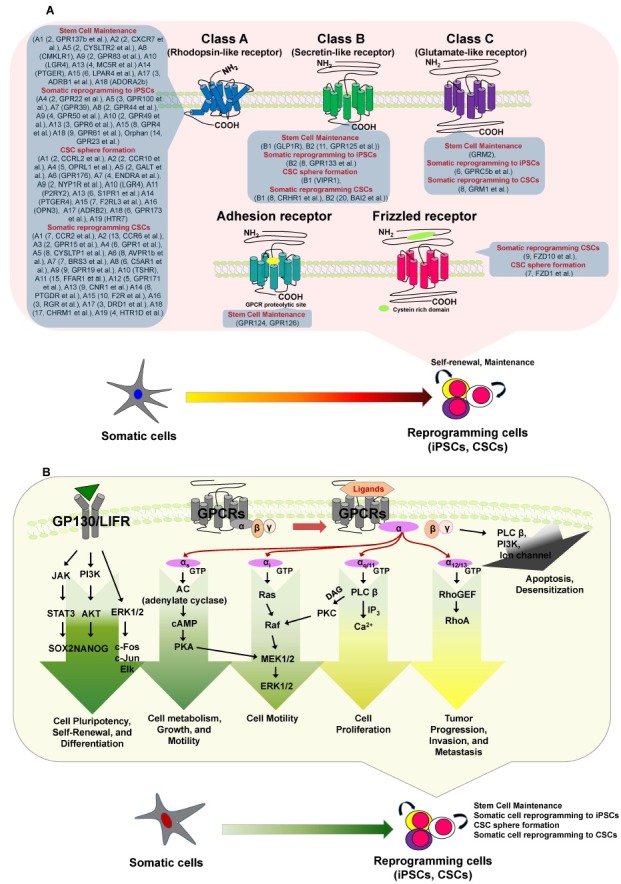Fig. 2. Differential GPCRs and GPCR signaling, which may be involved in stem cell maintenance and/or during somatic reprogramming to iPSCs or CSCs. (A) The GPCR superfamily has traditionally been divided into three major families: class A/rhodopsin-like receptors, class B/secretin-like receptors, and class C/glutamate-like receptors. Recent bioinformatics analyses have updated the phylogenetic characterization to five distinct families: glutamate, rhodopsin, adhesion, frizzled and secretin (GRAFS classification system). (B) Various ligands bind GPCRs to stimulate various G proteins. GPCRs interact with heterotrimeric G proteins composed of α, β, and γ subunits that are guanosine diphosphate bound in the resting state. Most GPCRs activate one or multiple Gα proteins, which can be subdivided into four major families: Gαi, Gα12, Gαs, and Gαq. Ultimately, the integration of the functional activities of G protein-regulated signaling networks controls many cellular functions, and the aberrant activities of G proteins and their downstream target molecules can contribute to various cellular mechanisms, including roles in stem cell maintenance and somatic reprogramming to iPSCs or CSCs. (B) Activation of pluripotency and differentiation pathways by GPCRs.

